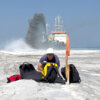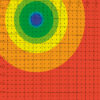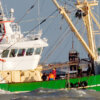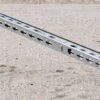Geotechnical and geological data help define the type, quantity and location of material to be dredged, which are then used to calculate dredging costs.
Since data about the types of soil, the quantities available, and the location of materials are directly linked to dredging costs, the highest accuracy in geotechnical and geological investigations is of great importance. These investigations will provide essential information about the physical and mechanical properties of the (sub)seabed.
Types of soil
The soil used for land reclamation purposes can be split into three main categories:
- Cohesive soils (clay, mud, silt);
- Non-cohesive soils (sand, gravel);
- Rock.
The data will include:
- the grain sizes of the soils and
- the strength and structure of rock.
Borrow areas and reclamation areas
Each of these soil categories requires its own approach. In addition, within each category, the geotechnical data requirements for borrow areas and for reclamation areas are quite different and should be treated separately.
To a large extent, data collection for a reclamation fill area corresponds with the data collection for the borrow area. However, the soil properties of interest will be different. For instance, the consolidation properties of the subsoil can be of great importance for the reclamation fill area, but are of less importance for the borrow area. Therefore the geotechnical laboratory test programme of the fill area will differ from the test programme of the borrow area.
Tests done in the borrow area are mainly aimed at determining:
- the quality,
- quantity and
- dredgeability of the soil.
Since the soil properties (e.g. grading) may change during dredging, not all tests are useful nor need to be treated with the same care.
Tests done in the reclamation area are mainly aimed at:
- estimating the settlement / consolidation caused by the placement of the reclamation fill; and
- checking the stability, bearing capacity and liquefaction resistance of the reclamation area and its edges (revetments, retaining walls, bunds and other adjoining areas).
Geological and geotechnical information in the borrow area
A guiding principle is that sufficient investigation should be undertaken to gain a full understanding of the area in question, in terms of the factors which influence dredging and transport processes and, therefore, costs.
- The first step is to conduct a desk study of available geological and geotechnical information and to identify an area with good quality non-cohesive fill at a reasonable haulage distance to the reclamation site.
- Secondly, a suitable borrow area will be identified by taking a sufficient number of boreholes or geophysical surveys.
Conclusions about the soil will be based on interpretation of the data by a qualified geologist or geotechnical engineer and/or geostatistical methods and computer modelling.
Soil investigation risks in the borrow area
Some provision and flexibility towards time, budget and equipment is necessary as it is almost impossible to plan exactly how much soil investigation is required prior to the actual investigation. Often a soil investigation campaign is set up in two phases with the results from the first phase being used to plan the second phase. The aim of this two-step approach is to limit the degree of risk, and thus cost, of encountering unsuitable soil.
Although often neglected, information on the relative density in the borrow area is required for an accurate estimate of the dredging production.
Soil investigation campaign for capital dredging works
When the reclaimed material is a by-product of the dredging works, all soils or rock above the design level will have to be removed.
When dredging rock, verifying that none of the rock above the dredge level is too hard to be dredged is important. The only alternative to removing such hard rock would be by hammering or blasting, which are costly solutions.
Geological and geotechnical information in the reclamation area
Soil investigation in a reclamation area is required at two moments:
- first, to map the existing subsoil in a future reclamation area; and
- second, after the reclamation area is filled, in order to check the properties of the fill and to monitor its behaviour, such as settlement and consolidation.
Also, depending on the future use of the reclamation area, specific additional data may be needed.


























